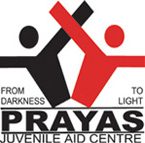Community Based Disaster Management_Flood Preparedness in J&K
Location of the Project:- Jammu & Kashmir (Srinagar, Anantnag, Kulgam, Pulwama, Ganderbal, and Badgam)
- Training of three districts has been conducted. (Anantnag, Kulgam, Pulwama)
- Training to be conducted in the upcoming months (Ganderbal, Srinagar, Badgam)
| Broad Objective: |
Identification of vulnerable population, creating awareness about their vulnerability and build capacities of the local population for better response to disasters (floods) |
| Duration of the project: | 6 months |
| Period of Reporting | 01.05.2020- 30.11.2020 |
| Beneficiaries | Communities of 6 Districts (Direct: 180, Indirect: 350) |
- The trainees were aware about the nature and scope of damage that disasters bring along such as floods and are now aware about preparedness actions that could be taken during floods. They are also aware about the crucial Do's & Don’t’s to be followed during disasters and response of state actions during disasters management.
- The programme was capacitive enough in preparing individual cognitively to tackle future disasters.
- It increased the efficiency, effectiveness and impact of disaster emergency response.
- The training workshop built-up understanding related to the psychological & long term consequences in the aftermath of such kind of disasters.
- It helped in improving the preparedness and response time at all levels before and after disasters. It improved the coordination of disaster preparedness as well as the competences and availability of disaster management tools.
- The participants / trainees are now more aware about the preventive and preparedness actions that could be taken during floods.
Identification of Vulnerable Population & Preliminary Awareness Programs: Surveys with predefined questionnaires were conducted in the vulnerable locations of all 6 districts. The locations were identified on the basis of: (i) proximity to a river or flood channel, (ii) areas which have been damaged due to floods in the past years. The broad objectives of the survey were - Identification of Vulnerable Population/Communities; Understanding the extent of damages caused due to previous floods; Understanding the level of awareness about floods/disasters amongst the community members.
The survey highlighted that there had been minimum or no government outreach about disasters in these districts. The community members were generally not aware about existing policies or laws related to disasters.
Detailed Survey Report:
Awareness programs on Flood Preparedness and Community Based Disaster Management were carried out in 6 districts of J&K after conducting the preliminary survey exercise. The broad objectives of the awareness programs were:
- Understanding Risks of Disasters- especially, Floods
- J&K State Disaster Management Policy, with focus on Floods and Cloudbursts
- Understanding Role of Various Stakeholders during Disasters
Awareness Programs mostly focused on the Do’s and Don’ts to be kept in mind during floods. The pamphlets and other IEC materials were shared with the participants during these programs in all the 6 districts.
Community Based Disaster Preparedness: After conducting surveys and awareness programs in all the districts, local community leaders from vulnerable areas in the districts were identified who were willing to attend the training programs and in turn, impart their knowledge to their fellow community members. Participatory Rural Appraisal (PRA) exercises were conducted in all the districts to plan out a Emergency Plan in case of floods.
Village Emergency Plan was thus formulated after taking inputs from all participants. The Plan broadly focused on:- Communication & Warning Dissemination Plan
- Individual & House Hold Plan
- Co-ordination
- Shelter Management
- Village Patrolling
- Assessment
- Relief Distribution Plan
- Damage Assessment Plan
- Water & Sanitation Plan
- Carcass Disposal Plan
- Documentation
30 individuals were identified from each district to form an Action Group. These Action Groups would then be provided training on Flood Preparedness and Community Based Disaster Management.
Village Emergency Plan:
Communication & Warning Dissemination Plan -- Confirm warning from district control room/block control room. VDMC (Village Disaster Management Committee) approves orders for issue of warning.
- Constant communication through shelter mobile phone with District Control Room, IMD, warning dissemination centre, Red Cross control Room, Block control Room.
- Food items/ Drinking water/ Clothing for all types of people for 03 days, Medicine as required, Utensils as required, Radio, torch, sticks, lanterns, match boxes, mosquito nets.
- Packing & safe keeping of all house hold goods, precious Precious house hold documents, valuables, cash in safe container with lock & key (in case the house is likely to be submerged packing for moving to safe place).
- Keep abreast with all warnings, confirm from Govt source.
- Monitor & execute household & individual evacuation plan.
- Monitor & supervise the household preparedness.
- Clean the roof & entire shelter and over-head water tanks
- Store clean drinking water in all the water tanks & stock all dry food as per the VDMC guide lines
- Clean the area earmarked for animals & check all the First aid Kits for all the medicines.
- Inform households for proper securing of all doors & windows from inside & lock at the entrance door
- Check for safety of each Household
- Consolidate the household head count for all types of shelter & check if all are accounted for.
- Consolidate animal count from animal evacuation leaders.
- Consolidate house safety plan from the patrol teams.
- Recorded damage to lives (both human & animals), houses & crop for corroboration with the detailed report of the damage assessment team.
- Verify & Update the household master list for total number of Adults/ children. In case possible carry out advance stocking of relief material in accordance with scales & master list.
- Supervise distribution of clean drinking water & dry food. In case possible organize cooking & distribution of hot food.
- Establish link by telephone with block officials for earliest provisioning of dry food & relief material.
- Ensure that all the households receive dry food/relief material/cattle fodder.
- Inspect & assess the existing condition of each house & note.
- Update & authenticate the household record of adult & children status.
- Update & authenticate the Animal holding status of each household.
- Update & authenticate the cultivated land acreage of each household with the crop cultivated.
- Carry out physical examination of all the above, compare them with before status & note exact state of damage.
- Photograph exact state of damage and appraise the VDMC members at the earliest about the status of each type of damage.
- Ensure all drinking water facilities are functional.
- Inspect & ensure clean drinking water at the shelters.
- Disinfect wells, tube wells & all drinking water sources.
- Clean up village of all fallen trees/branches/all stagnant water bodies/all debris.
- Inspect the burial ground & animal carcass disposal ground.
- Identify fire wood & store.
- Ensure that all formalities in accordance with relief code for compensation are completed before burial/ cremation of body.
- Keep a record of all types of damage /death reported.
- Record of all types of relief material received.
- Inspect & accurately record all types of damages/deaths compiled by the teams & check photographs.
- Check & verify all types of relief distributed from the beneficiaries.
- Prepare a resolution on the above aspects with photographs & accurate verified data.
Training & Capacity Building:
Two Programs of Training & Capacity Building have been conducted in Anantnag & Kulgam in the month October.
A-2 Days Community based disaster flood preparedness program/project cum Workshop was conducted by Prayas JAC Society at Anantnag & Kulgam districts, Jammu & Kashmir on flood Preparedness. In this training program 30 volunteers boys & girls from various areas of the district participated which are vulnerable and prone to floods.
The training was divided in five different sessions namely :
- Existing Mechanism
- Flood Mitigation.
- Flood Preparedness.
- Flood Response.
- Role of Various Stakeholders.
- Community Based Disaster Preparedness.
Prayas ImpactReal Impact, Measurable Results
It’s not just a donation, it’s an
investment in a children’s future…
Support by volunteering
Become a Volunteer
